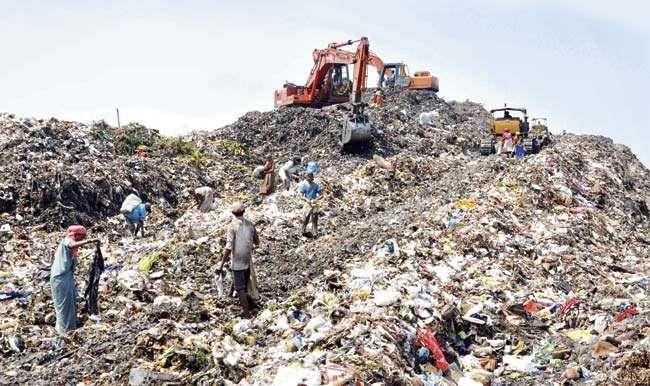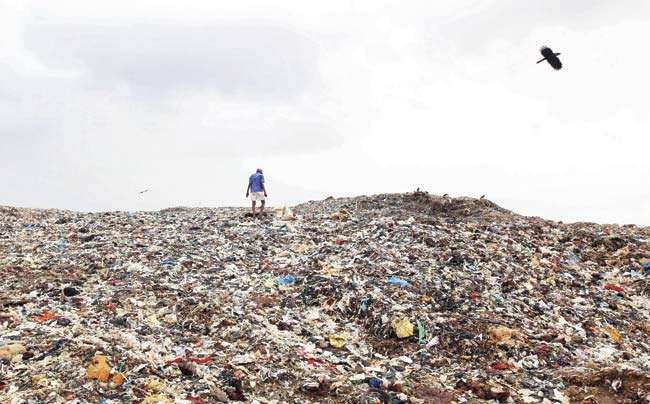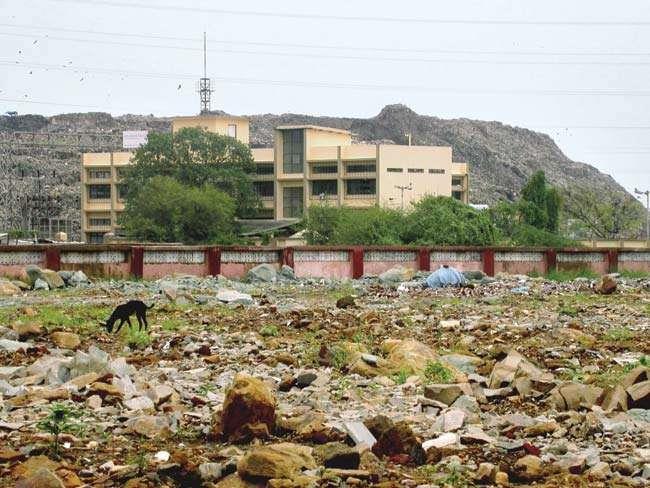January 7, 2014
MUMBAI: There is trash talk in the corridors of the Brihanmumbai Municipal Corporation (BMC) of the good kind. Civic authorities have decided to act on the city’s problem of increasing garbage, and will take to putting up composting pits in BMC’s gardens to process waste from the garden and surrounding areas.

Dumping ground
January 7, 2014
MUMBAI: There is trash talk in the corridors of the Brihanmumbai Municipal Corporation (BMC) of the good kind. Civic authorities have decided to act on the city’s problem of increasing garbage, and will take to putting up composting pits in BMC’s gardens to process waste from the garden and surrounding areas.

Dumping ground
The Gardens department of the BMC has taken up the initiative to install mini-composting plants in select gardens and open spaces in the 24 wards in its jurisdiction. It is expected that, initially, there will be one plant per ward, and the project is expected to begin by the end of January.

Deonar dumping ground
The huge heap of garbage at the Deonar dumping ground now stands 20 metres tall as high as an 18-storey tower. File pic for representation
These plants will occupy an area of 300-400 square feet, and will process waste mostly leaves and mulch (material laid over soil to conserve moisture) from the same park and its surrounding areas.

Gorai dumping ground
The BMC scientifically closed the Gorai dumping ground in June 2009
A source from the Solid Waste Management department said that these plants would have a capacity of around 5-10 metric tonnes (MT) each. The manure produced will be used as fertiliser for plants. “If one garden in each ward has one composting plant, around 200-300 MT of garbage will be reduced from total waste generated.
This amount may increase after all gardens start composting,” said an officer from the Solid Waste Management department. If this project is deemed successful, it can be executed in all of the city’s 1,000-odd gardens.
Piling up
“We are running short of places since current dumping grounds have reached full capacity. The quantity we are targeting to treat by composting in gardens will definitely reduce the pressure on dumping grounds,” said Deputy Municipal Commissioner Prakash Patil.
The BMC has an unenviable task on its hands. The city generates more than 10,000 MT of garbage daily, and there are only two dumping grounds at Deonar and Mulund. Both have reached their saturation point, with Deonar getting 6,000 MT of waste and Mulund getting 4,000 MT.
The garbage heap at Deonar is 20 metres high equivalent to an 18-storey tower. The BMC has also completed the scientific closure of the dumping ground at Gorai. BMC’s pleas to the CM-headed MMRDA, asking for land to dump the city’s waste, have gone unheard.
A third dumping ground, at Kanjurmarg, was the subject of a dispute due to a court order and the State Environment Impact Assessment Authority. The latter gave its permission last month to begin dumping there, and this will reduce the burden on the other two plots.
Scientific closures of the three remaining dumping grounds are also expected, but haven’t begun due to technical reasons. Thus, the composting plants offer a better solution. Some city gardens have, in fact, begun working with small composting pits, but have not made much progress.
Moreover, there was no clarity on the amount of waste to be treated and the area allotted to set up the pits. Joint Municipal Commissioner S S Shinde, who heads the Gardens department, told mid-day that they have modified the conditions in the tenders given out to contractors who maintain the gardens. According to the new clause, the contractor will be required to set up a composting plant in the park he maintains.
Garbage in numbers – 10,000 MT
Amount of garbage produced by Mumbai every day – 7,500 MT
Amount of regular waste, which includes wet and dry waste from homes, offices, etc – 2,500 MT
Amount of waste generated as construction debris – 6,000 MT
Amount of garbage going to Deonar dumping ground – 4,000 MT
Amount of garbage going to Mulund dumping ground – 12 MT
Amount of biomedical waste generated. The BMC treats this in its waste plant at Deonar, which incinerates the garbage
Courtesy: Midday
















































































































